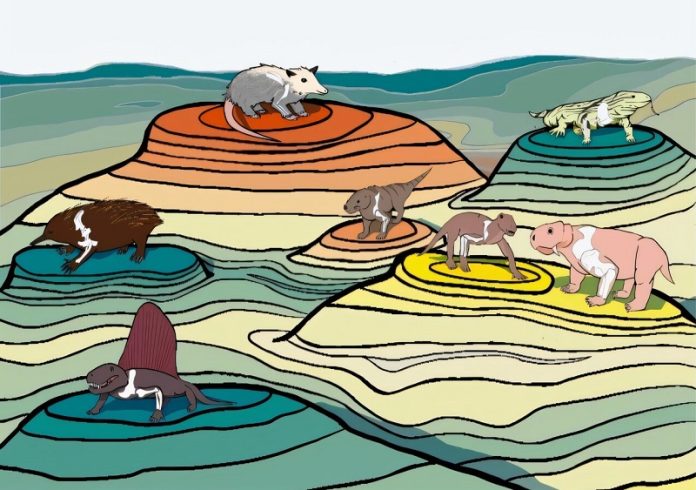
Scientists have long wondered how mammals, including humans, evolved to walk with their legs under their bodies instead of splayed out to the sides like lizards.
This upright stance, called a parasagittal posture, helps animals move more efficiently and is key to the way all modern mammals—from moles to whales to people—get around.
For more than a century, researchers believed mammals evolved upright walking through a gradual, step-by-step process. But a new study reveals a much more surprising path.
The research, published in PLOS Biology and led by Dr. Robert Brocklehurst, a former postdoctoral fellow at Harvard University, shows that the shift from sprawling to upright posture wasn’t a straight line.
Instead, it involved lots of evolutionary detours, unexpected changes, and bursts of new ideas in nature’s design playbook.
Early ancestors of mammals, known as non-mammalian synapsids, started out with sprawled limbs, similar to today’s lizards.
But exactly how and when their posture changed was a mystery. Brocklehurst and his team studied over 200 species, comparing fossil arm bones from ancient synapsids with modern mammals, reptiles, and amphibians.
They used cutting-edge tools to measure how bone shape affected movement, looking at details like bone twisting, length, and muscle leverage.
The team applied a powerful analytical method developed in Professor Stephanie Pierce’s lab at Harvard to assess how well different bones were built for upright or sprawled walking.
By mapping their findings onto a “functional landscape”—a kind of performance map—they could see which animals were better suited to which kind of movement.
What they found turned old ideas upside down. The transition to upright posture didn’t happen in a smooth, linear way. Instead of a gradual climb from lizard-like animals to modern mammals, the path was filled with bursts of innovation.
Some ancient species moved in ways more similar to mammals, while others tried out different strategies. Posture and walking styles varied widely, even among closely related species.
One fossil, which was a close relative of today’s marsupials and placental mammals, showed features of fully upright walking, suggesting this trait appeared much later in mammal evolution than previously thought.
This supports earlier findings from the same lab, which had shown similar patterns in the backbone and hindlimb.
The study also challenges the long-held belief that early mammal ancestors moved like modern reptiles. The fossil bones revealed that many of these creatures used their limbs in unique ways, not quite like any animals alive today.
To make these comparisons across such a huge range of species and bone shapes, the researchers had to create a new method. They adapted existing software to work with sliced images of bones, allowing them to compare even the most different-looking skeletons.
This project builds on a century of work by paleontologists, including those from Harvard’s Museum of Comparative Zoology. Thanks to new technology and large datasets, scientists are now able to revisit long-standing questions with fresh eyes.
Dr. Brocklehurst summed it up well: understanding how mammals came to walk upright isn’t just about fossil bones—it’s about revealing the dynamic, twisty story of life’s evolution. The journey to walking tall was anything but simple—and that makes it all the more fascinating.



